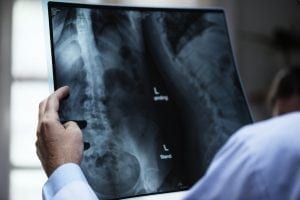On March 11, 2021, Patient Worthy attended an educational seminar hosted by the Cleveland Clinic titled Neuromyelitis Optica Spectrum Disorder (NMOSD): Educational Seminar for Patients, Family Members and Caregivers Focus on Adult and Pediatric Patients. The program provided a valuable overview of NMOSD and discussed some of the latest updates in the research and treatment related to the disorder.
One portion of the program, titled NMOSD Treatment Updates, focused on the latest in treatment approaches and was hosted by Hesham Abboud, MD, PhD. Dr. Abboud is the Director of Neuroimmunology and Assistant Professor of Neurology at the Case Western Reserve University School of Medicine.
About NMOSD
NMOSD is a term meant to include both neuromyelitis optica patients and those that lack the APQ4 auto antibody but still present similarly otherwise. This disorder is also known as Devic’s disease. It is characterized by inflammation of the optic nerve and spinal cord along with the destruction of the myelin sheath, an insulating, protective layer surrounding nerve cells. It is considered an autoimmune disease in which the immune system mistakenly begins attacking parts of the body. It is frequently associated with other diseases, such as viral infection and antiMOG associated encephalomyelitis, the latter of which can be a direct cause in some cases. Symptoms include blindness, urinary incontinence, spastic paralysis of the legs and arms, reduced sensation, and overall muscle weakness. Symptoms can be treated, but many patients are left with a degree of impairment. To learn more about NMOSD, click here.
Dr. Abboud started by categorizing the treatment goals of NMOSD into four main goals:
- Management of acute symptom relapse.
- Prevention of future attacks.
- Treatment of residual symptoms.
- Restoration of lost function.
Acute Relapse
Symptom relapses often call for rapid and aggressive intervention to produce the best outcomes. Therapies in this instance include high-dose steroids, immunoadsorption, and plasma exchange. Other disease-modifying treatments may play a role in some cases; as for steroids, the dose is generally tapered down after a period of acute treatment. If symptoms are severe, some patients may require breathing assistance and admission to an ICU.
Prevention
There are a number of therapies that may be employed in order to prevent future symptom episodes. FDA approved therapies for APQ4 positive NMOSD include eculizumab, satralizumab, and inebilizumab. There are also a number of medicines that are used off-label (without official FDA approval) for the full spectrum of NMOSD, such as rituximab, azathioprine, mycophenolate mofetil, and tocilizumab. A long-term course of steroids may also be employed.
Pediatric NMOSD Patients
In the cases of child patients, providers and patients should be aware that some of the newer therapies haven’t been tested on them. Rituximab has become the preferred therapy in pediatric cases that are APQ4 positive or are recurring, albeit in smaller doses. Meanwhile, the use of mycophenolate mofetil and azathioprine carries an increased risk of cancer later in life.
There are also a wide variety of symptomatic therapies that may be employed in NMOSD, such as muscle relaxants, anticonvulsants, stimulants, and antidepressants. Meanwhile, neuromodulation therapy can help patients regain and restore function.
While there are a variety of treatments and interventions that can be effective in NMOSD, research continues to find more advanced therapies that can improve quality of life further. Avenues that are currently being investigated include remyelination and neuroregeneration using stem cell therapy.








